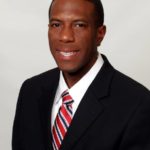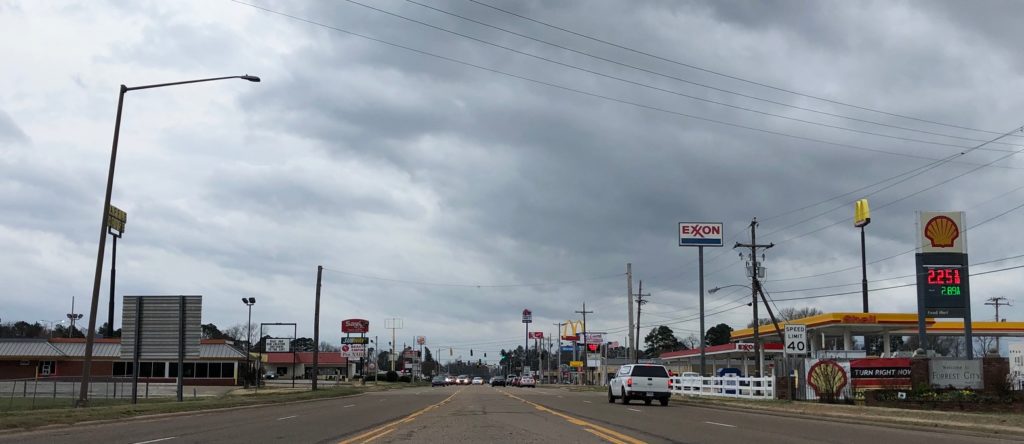Amid Covid-19 Outbreak, a Bridge to Unity in the African American South
Along the Arkansas Delta in the heart of cotton country, Forrest City, Arkansas, (pop. est. 14,044) has a long, turbulent history of racial conflicts and economic and health disparities. Since taking office in January 2019, Mayor Cedric Williams, a non-city-native, has been working to bring about unity — now, the Covid-19 outbreak is bringing people together (while social distancing) toward the goal of community health.
It’s a leap forward for Forrest City, where the population has remained heterogeneous and often separate. African Americans make up 72% of the city’s residents, non-Hispanic whites account for 23%, and Hispanics, 3%.
Already, the Covid-19 crisis has hit here. Forrest City houses a federal prison of more than 2,100, and 30 people, including staff and inmates, have tested positive for the coronavirus as of April 10.
The city’s socioeconomic challenges are significant as well: Median household income is just above $32,000, with 31% of the population in poverty. Just 10% of residents have a college degree, and only 53% have a broadband internet subscription. Hanging over all these elements is an 8.8% population decline since the 2010 census.

Dissolving these inequities is top of mind for Mayor Williams. I caught up with Williams, featured in our rural report and event last fall, to discuss how he’s meeting the needs of the Covid-19 outbreak, the progress on his unity initiative, and his vision for Forrest City’s future.
Pinkus: How is Forrest City doing in the Covid-19 crisis?
Williams: Within our county [St. Francis], we had our first confirmed case in late March. And we have a federal prison in Forrest City with some confirmed cases. We’re facing limited testing capabilities.
I implemented a few initiatives based on the CDC guidelines. I took the basketball goals down and apart. I made it mandatory to close all of our city parks at 4:00 p.m. daily because a lot of people weren’t believing it until [Covid-19] started affecting us in our community. Now that it’s affecting us, people are starting to heed what’s going on.
I worry about the economic downturn because we have a lot of small businesses. Trying to educate them on how to get some of these loans and about what the federal and state governments are doing — and not to close their doors, but weather this storm.
Pinkus: Have you issued a stay-at-home order?
Williams: I can’t from a mayoral standpoint. Our state has not issued a stay-at-home order yet. All I can do is strongly encourage people to do that. At least three times a week, I’m on the morning talk show, and I’m doing a Facebook live interview this evening with the local newspaper.
Pinkus: Are businesses permitted to operate?
Williams: They are permitted to operate only from a drive-thru standpoint — no in-room dining. What was really a big thing in our area was mandating that all barbershops, beauty salons, and fitness centers close.
Pinkus: How about churches?
Williams: I’m proud of our churches. I think it goes back to my relationship-building. They’ve adapted their services to be virtual online. They were not mandated to do that because of separation of church and state, but were strongly, strongly recommended to do it, and that’s what they’re doing now.
Pinkus: Do you meet with a task force?
Williams: Actually, two task forces. We have the St. Francis Coronavirus Pandemic Task Force that’s made up of all our county officials. It’s more about disaster planning, like making sure you have overflow hospital beds if things get worse.
I convened my own task force for Forrest City outreach because we needed to communicate the message to the people. When this gets worse, we know where to reach the most vulnerable people – the elderly, low-income, and special needs.
In my task force, I brought in representatives from education entities, affordable housing, developmental entities, and faith-based organizations. We talked about how we reach people if it gets worse. Identify the elderly who will not be able to come to a food pantry or a place to get resources. How do we deliver resources to people who don’t have Facebook, who don’t read the newspaper?
In low-income housing, you have pamphlets, fliers in mailboxes so people know where the resources are.
Pinkus: Do you find that the community is coming together?
Williams: That’s one of the biggest things. This is forcing everybody to come together. I say out of every challenge comes an opportunity. This challenge is showing us how we can achieve so much more when we’re working together to help each other. After we get through this, it’s key that we continue to take this same mentality and partnership as a community and move forward in future ventures.
Pinkus: That leads me to your unity initiative. What are the main pillars?
Williams: Improve the internal and external communication coming from city leadership, and develop positive messages on how we could achieve more by working together, including the slogan: “One Forrest City, One Community, One Vision.”
Pinkus: What are you seeking to accomplish?
Williams: We’re working toward a few big things: changing the mindset that We Can — and will accomplish great things when we work together; developing partnerships with our community-based organizations, including the Chamber of Commerce, realtors, and faith-based groups; and developing a central Vision of Growth that encompasses our city’s economy and quality of life.
Pinkus: What steps did you take last year?
Williams: We held three unity breakfasts in the winter, spring, and fall with business leaders, education leaders, ministerial alliance members, and realtors where we discussed homeownership and its role in maintaining properties and city cleanliness, and increasing the rate of African Americans who own as opposed to rent.
We also had a Community Car Show driven by the city to benefit charities, including St Francis Care Center, St Francis Historical Society, AVESI [American Veteran Environmental Services], and St Francis County Food Pantry.
Pinkus: What results did you see?
Williams: I’m glad to see an improving relationship among schools and business entities, and a cleaner city with different organized clean-up projects, including the Keep Arkansas Beautiful Campaign. Local elementary students won this statewide contest.
After some of the real estate classes, people were starting to invest in properties that were on the condemnation list and remodel them, so we took them off the list. I can visually see that around town.
Other entities are using unity slogans within their organizations. For example, East Arkansas Community College has “Stronger together.” Forrest City School District is using “One School, One Mustang.”
Pinkus: Can you point to an improved local culture?
Williams: Yes, in a few ways. There’s more of a sense of pride in Forrest City. The Chamber developed a community involvement committee that had several activities to benefit organizations around town. There’s less negative talk on social media about Forrest City. Civic organizations, including the Chamber, Rotary, fraternities, and societies, have more of a sense of ownership in Our Forrest City.
Pinkus: Who are your go-to partners?
Williams: Three people are key. Dr. Tiffany Hardrick, superintendent of Forrest City Public Schools, and a partner in running a summer youth program. Dr. Cathie Cline at East Arkansas Community College has been part of various partnerships involving the police and fire department. Arkansas Rep. Reginald Murdock, five-term member of the state House of Representatives, has helped in navigating the political arena. He’s also helped establish relationships with the governor and others at the state capital as well as the head of Arkansas Economic Development Commission.
Pinkus: What are the key lessons you’ve learned in the past year?
Williams: Municipal initiatives take longer to implement than private sector changes. Grants take a lot longer to receive because of the red tape. Some decisions and changes — like franchising our local water department to bring in more revenue for our general fund — take longer to implement because of the levels of approval, including from the city attorney and city council.
I’ve also learned it’s important to clearly communicate your vision and reason behind an idea. Test for understanding by asking follow-up questions, especially with the council members. Take the idea of investing in your future. I own a business, so a lot of this investing to grow comes naturally. Other people, who are not business owners, have a save, save, save mentality.
Pinkus: What are your major plans this year to continue working to build unity in Forrest City?
Williams: We’ll continue pushing public-private partnerships to revitalize the downtown. Also this year, we’re going back to voters to restructure an Agriculture, Recreation, and Industry bond to fund different capital projects. It is a way for us to “invest in ourselves” without raising taxes.
Pinkus: What is your long-term vision for the city?
Williams: To improve the health of our entire area, particularly creating an environment for sustainable progress in job creation and quality of life. It’s great that Delta Recovery Center recently brought 14 new jobs to Forrest City.
Pinkus: What role do you hope to play?
Williams: I want to be the catalyst and the bridge to the next leadership in the next three to seven years. While I don’t see myself as a long-term politician, I plan to continue to lead and build relationships. It’s what I was doing before I became mayor, what I’m doing now, and what I will strive to do after I leave the mayor’s office.
